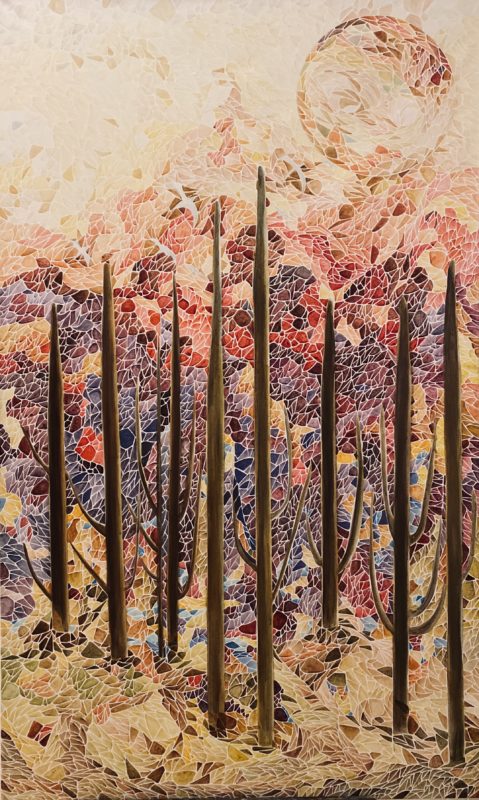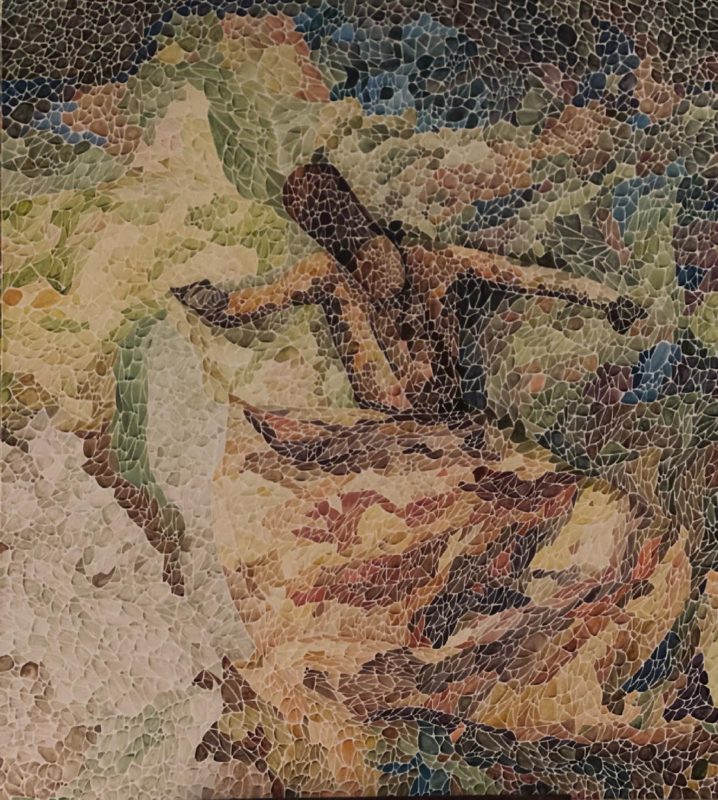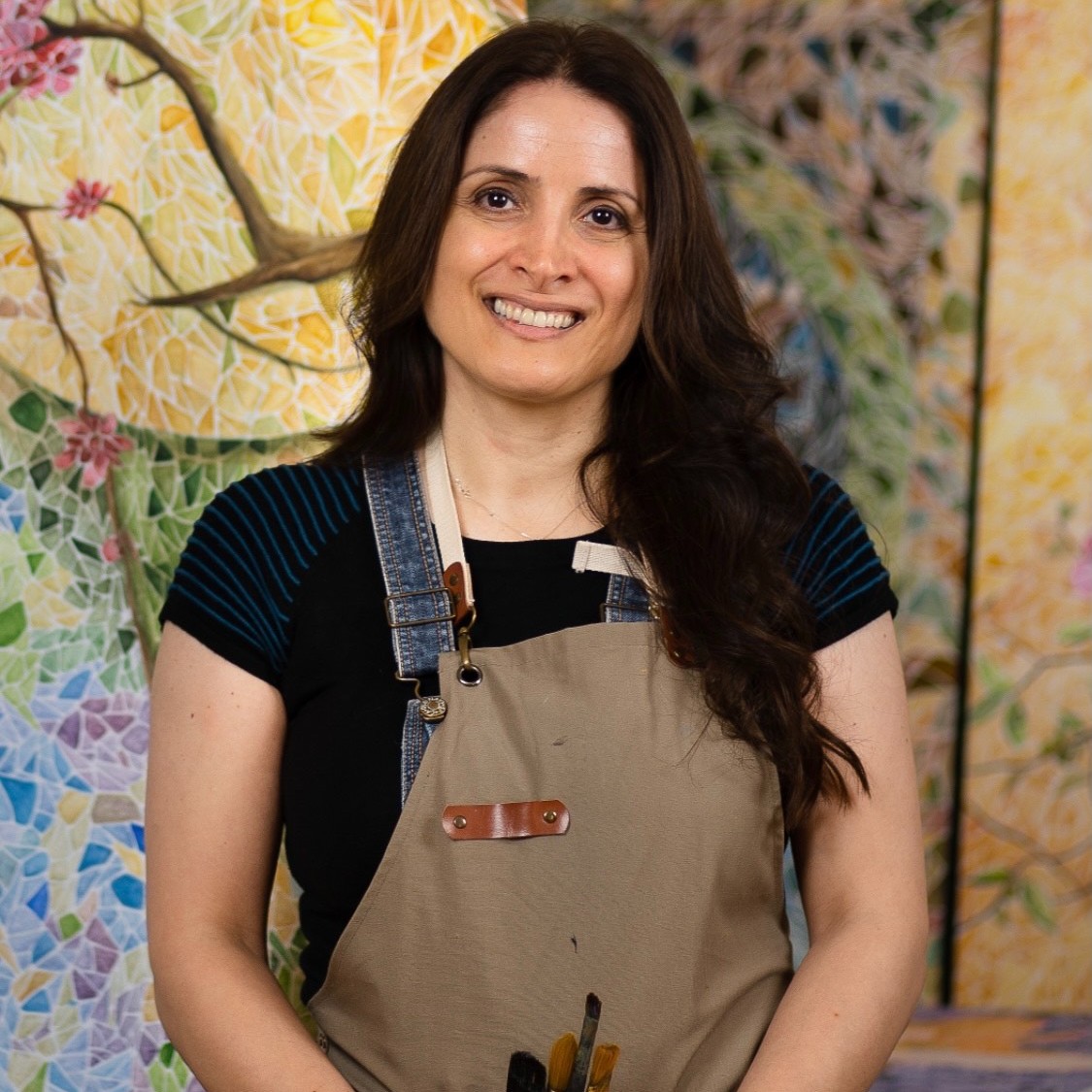Roudaina Fardon creates sophisticated painted mosaics inspired by nature, literature, and her own experiences. A blend of Eastern and Western art, they inevitably captivate the viewer with their dreamlike imagery, elegance, and elaboration of detail. Fine Art Shippers caught up with Roudaina Fardon to learn more about the artist and her sources of inspiration.
Artist Talk: The Mosaic World of Roudaina Fardon
You have quite an eventful biography. Please tell us about your background.
Roudaina Fardon: I was born in Liberia. My parents lived there at the time but later moved to Côte d'Ivoire. So I spent most of my early years in Africa. I attended college in Beirut, where I met my husband. He is also Lebanese by origin but lived in the United States, in California. He was in Beirut for work reasons, so it was a happy coincidence. There was a spark between us, and after obtaining my bachelor's degree in fine arts, I moved to California, where I continued my art studies. I had several exhibitions in the United States, but it was challenging to make art while caring for the family and raising two boys. After my children grew up and left home, I returned to my art. My husband and I now live in Dubai.

How would you describe your art experience in Lebanon and the United States? Obviously, you have managed to incorporate the best of both Eastern and Western cultures into your art.
When I went to college in Beirut, there were a lot of formal limitations as to what we could and could not do. In California, we had more freedom, and our teachers constantly encouraged our artistic courage and desire to express ourselves. In addition, the beauty of nature in California inspired me immensely.
You describe yourself as an author with paint. What kind of stories do you tell?
My stories and messages are universal: love of nature, art, our connection to each other, and fascination for different cultures and people around us. Nature has always been my greatest source of inspiration; this is where everything begins, including human history and civilization. The latter is now endangered by climate change, and I'm trying to make my own contribution to the preservation of our planet.
You have an interesting technique. With paint and brush, you create artworks that are reminiscent of Roman mosaics and pointillist paintings at the same time. How did you come up with this technique?
It took me three years to find my style. It came about through experimenting. You can paint or draw, but you have to be unique. I used to work a lot with pastels and did a lot of sketching before. And one day, while sketching some daily scenes, as was my habit, I suddenly realized that I wanted to put them on canvas.
As for this mosaic imagery, it is rooted in my desire for artistic freedom. I don’t have preconceived ideas about the future painting before I start working on it. By fragmenting it, I have no constraints on how it will evolve. I enjoy being in a flow state, moving on intuitively wherever the painting brings me.

As you write on your website, poetry is another important source of inspiration for you. Could you tell us more about that?
I love Sufi poetry and read a lot of it, especially Rumi; each time, it fills me with happiness, gratitude, and awe of the world. I have an upcoming exhibition during Ramadan that will show a series of my paintings inspired by Sufi literature. I want to capture its fleeting beauty and profound wisdom in visual images.
Where are your works can be seen? Do you exhibit internationally?
Some of my works are at Gate Avenue, the Damac Tower JLT, and the Nakheel Mall here in Dubai. Just recently, I took part in the Qatar International Art Festival. I have connections with galleries in the UK and France, but during the pandemic, there were a lot of logistics difficulties, so I decided to focus on the Middle East, especially since its art scene is booming now.
Do you use professional art shipping services?
I actually had a bad experience moving my art to Qatar: some of my work was damaged, and I had to fix the paint the night before the event. That made me realize how important professional art logistics services are. Right now, I’m looking for specialists who would be able to deliver my art to Saudi Arabia for an upcoming project.
Photo courtesy of Roudaina Fardon
